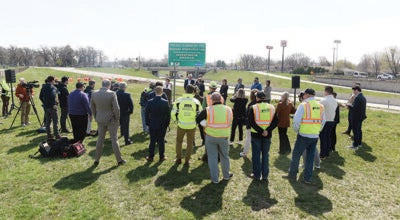Pedestrian crashes, fatalities increase in fall
Published 8:05 pm Monday, October 22, 2018
More hours of darkness this time of year increase the number of pedestrian crashes and fatalities, according to the Minnesota Department of Transportation. As the days get shorter, motorists and pedestrians should use caution when driving and walking.
So far this year, 28 pedestrians were killed. In 2017, 42 pedestrians were killed and 1,053 were injured compared to 60 deaths and 1,037 injuries in 2016.
“Pedestrians are more difficult to see when the sun rises later and sets earlier, increasing the risk of crashes,” said Ray Starr, acting state traffic engineer. “Motorists and pedestrians are equally at fault when we look at the crash data. Both groups need to know and obey the laws because basically we’re all pedestrians at some point in our day.”
The crosswalk law includes these highlights:
Motorists must stop for crossing pedestrians at marked crosswalks and at all intersections without crosswalks or stop lights.
Pedestrians should obey traffic signs and signals at all intersections that have them.
Vehicles stopped for pedestrians can proceed once the pedestrian has crossed the lane in front of the stopped vehicle.
Pedestrians shouldn’t enter a crosswalk if a vehicle is approaching and it is impossible for the driver to stop. There is no defined distance that a pedestrian should abide by before entering the crosswalk; common sense should be used.
When a vehicle is stopped at an intersection to allow pedestrians to cross, drivers of other vehicles approaching from the rear should not pass the stopped vehicle.
According to the Department of Transportation, about one-third of pedestrian crashes happen during the weekday rush hour driving time, defined as 6 to 9 a.m. and 3 to 6 p.m. One out of every four pedestrian fatal crashes occurred between the hours of 9 p.m. and 3 a.m.





